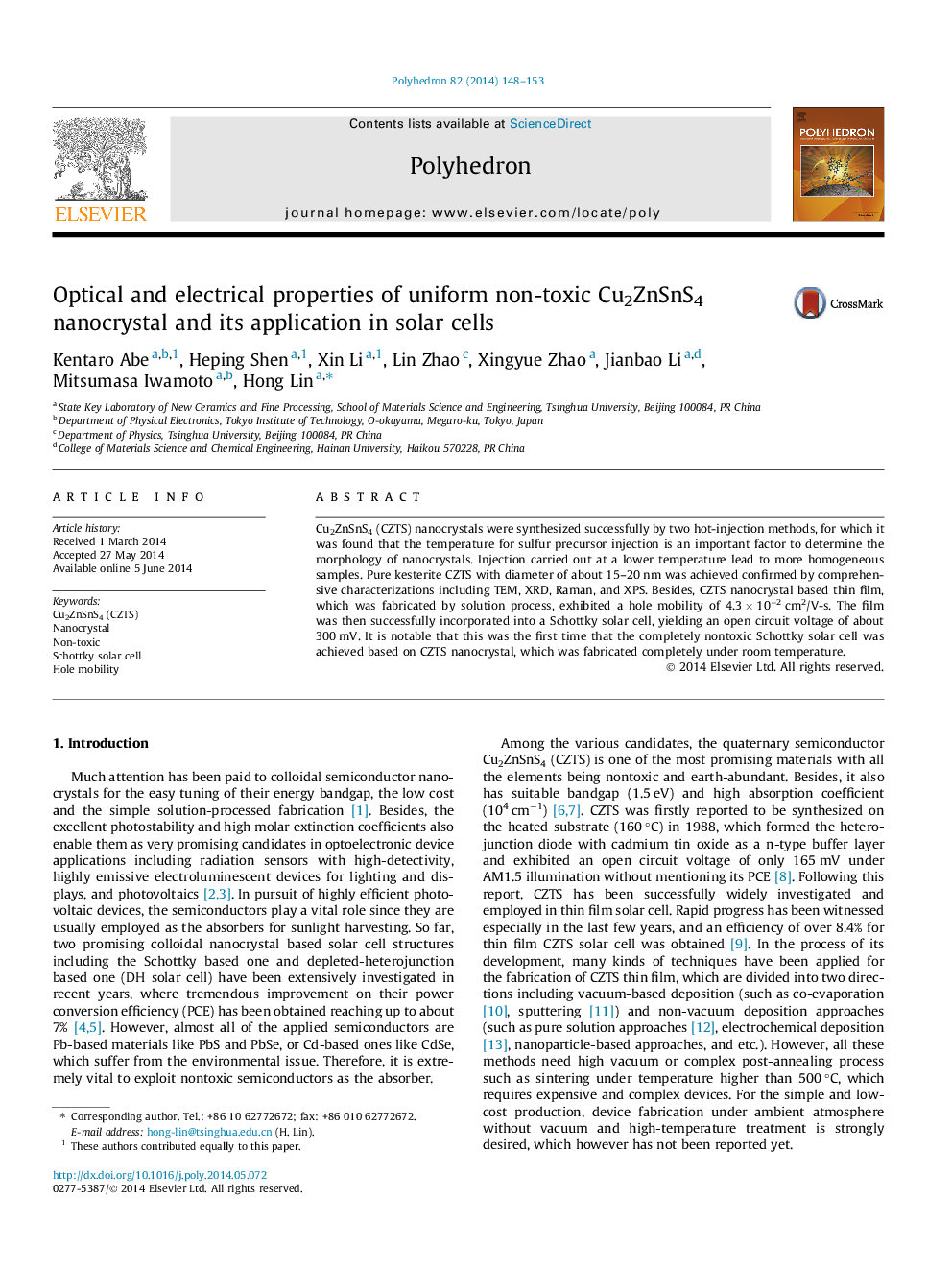| Article ID | Journal | Published Year | Pages | File Type |
|---|---|---|---|---|
| 1336449 | Polyhedron | 2014 | 6 Pages |
Cu2ZnSnS4 (CZTS) nanocrystals were synthesized successfully by two hot-injection methods, for which it was found that the temperature for sulfur precursor injection is an important factor to determine the morphology of nanocrystals. Injection carried out at a lower temperature lead to more homogeneous samples. Pure kesterite CZTS with diameter of about 15–20 nm was achieved confirmed by comprehensive characterizations including TEM, XRD, Raman, and XPS. Besides, CZTS nanocrystal based thin film, which was fabricated by solution process, exhibited a hole mobility of 4.3 × 10−2 cm2/V-s. The film was then successfully incorporated into a Schottky solar cell, yielding an open circuit voltage of about 300 mV. It is notable that this was the first time that the completely nontoxic Schottky solar cell was achieved based on CZTS nanocrystal, which was fabricated completely under room temperature.
Graphical abstractCu2ZnSnS4 (CZTS) nanocrystals were synthesized successfully by two hot-injection methods. It was found that sulfur precursor injection carried out at a lower temperature lead to more homogeneous samples. Schottky solar cell based on CZTS nanocrystal with the open circuit voltage of 300 mV was achieved, which was fabricated completely under room temperature for the first time.Figure optionsDownload full-size imageDownload as PowerPoint slide
